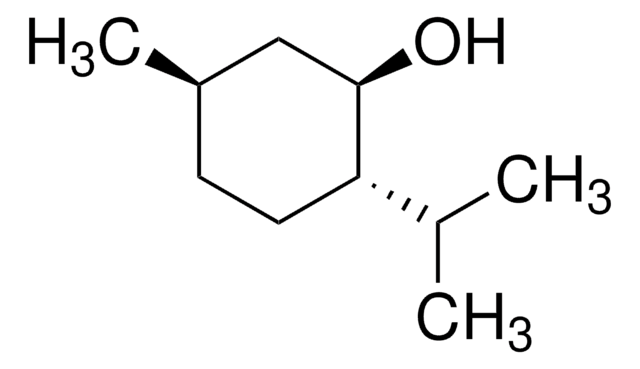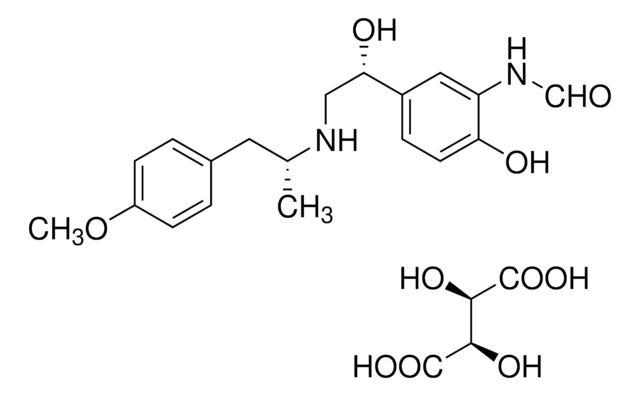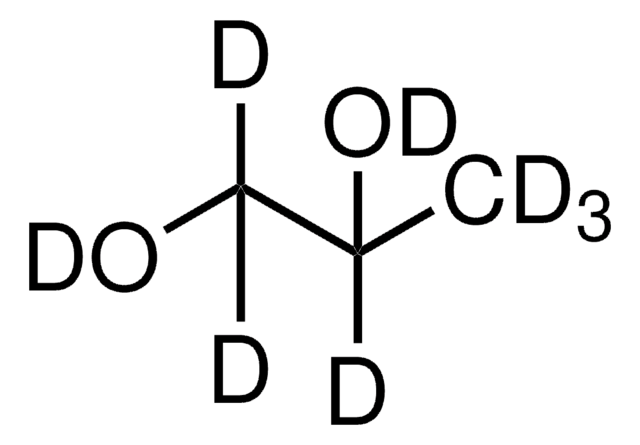PHR1045
Diethylene glycol
Pharmaceutical Secondary Standard; Certified Reference Material
Sinónimos:
DEG, 2,2′-Oxydiethanol, 2-Hydroxyethyl ether, Bis(2-hydroxyethyl) ether, Diglycol
About This Item
Productos recomendados
grado
certified reference material
pharmaceutical secondary standard
Nivel de calidad
Agency
traceable to Ph. Eur. Y0000217
traceable to USP 1193265
densidad de vapor
2.14 (vs air)
presión de vapor
0.01 mmHg ( 20 °C)
familia API
diethylene glycol
CofA
current certificate can be downloaded
temp. de autoignición
442 °F
lim. expl.
2-12.3 %
técnicas
HPLC: suitable
gas chromatography (GC): suitable
índice de refracción
n20/D 1.447 (lit.)
bp
245 °C (lit.)
mp
−10 °C (lit.)
densidad
1.118 g/mL at 25 °C (lit.)
aplicaciones
cleaning products
cosmetics
food and beverages
personal care
pharmaceutical (small molecule)
Formato
neat
temp. de almacenamiento
2-30°C
cadena SMILES
OCCOCCO
InChI
1S/C4H10O3/c5-1-3-7-4-2-6/h5-6H,1-4H2
Clave InChI
MTHSVFCYNBDYFN-UHFFFAOYSA-N
¿Está buscando productos similares? Visita Guía de comparación de productos
Descripción general
Diethylene glycol is a a four carbon dimer of ethylene glycol and finds applications as antifreeze, solvent, humectant, hydraulic fluid and brake fluid. It is a potential neuro- and nephrotoxin for humans. It may also be utilized in moisturizers, lubricants, emulsification agents, additives and solvents.
Aplicación
Nota de análisis
Otras notas
Nota al pie de página
Productos recomendados
Aplicación
Producto relacionado
Palabra de señalización
Warning
Frases de peligro
Consejos de prudencia
Clasificaciones de peligro
Acute Tox. 4 Oral
Código de clase de almacenamiento
10 - Combustible liquids
Clase de riesgo para el agua (WGK)
WGK 1
Punto de inflamabilidad (°F)
280.4 °F - closed cup
Punto de inflamabilidad (°C)
138 °C - closed cup
Elija entre una de las versiones más recientes:
Certificados de análisis (COA)
Lo sentimos, en este momento no disponemos de COAs para este producto en línea.
Si necesita más asistencia, póngase en contacto con Atención al cliente
¿Ya tiene este producto?
Encuentre la documentación para los productos que ha comprado recientemente en la Biblioteca de documentos.
Los clientes también vieron
Protocolos
99%; Glycerol, ≥99.5%; Tetraethylene glycol, 99%
Chromatograms
suitable for GCNuestro equipo de científicos tiene experiencia en todas las áreas de investigación: Ciencias de la vida, Ciencia de los materiales, Síntesis química, Cromatografía, Analítica y muchas otras.
Póngase en contacto con el Servicio técnico










